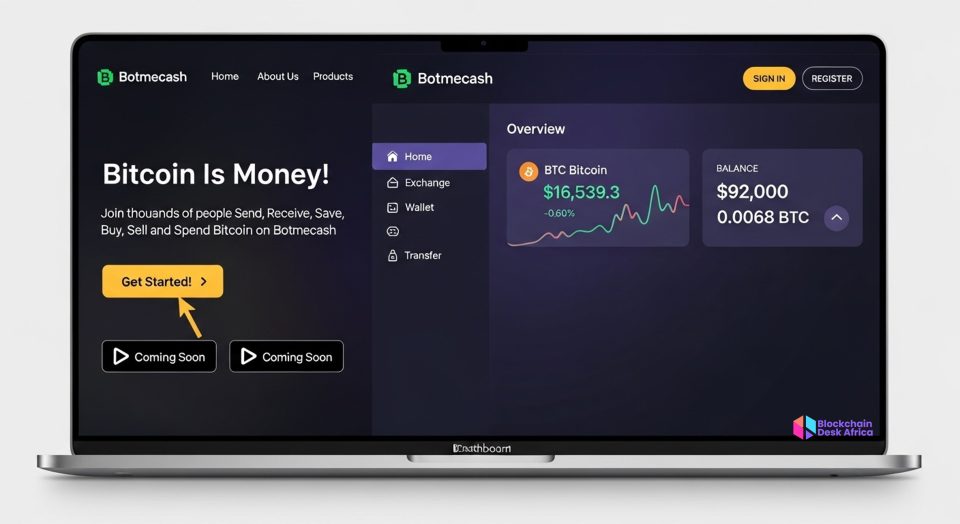Introduction
Did you know that many self-custody wallets today still struggle to connect the dots between holding assets and using them? Holding crypto is one thing, but spending, transferring, or converting it without friction is often another story. This review shows how Botmecash is tackling that usability disconnect, not by adding more features, but by focusing on the day-to-day transactions users want to perform.
What is Botmecash
is described as a modular digital wallet built on Layer 2 infrastructure. It is a Bitcoin-first service offering tools to send, receive, buy, sell, and spend BTC without needing exchanges or wallets. It operates on a peer-to-peer (P2P) model, making Bitcoin accessible for real-world transactions like cashouts, bill payments, remittances, and airtime top-ups.
Instead of focusing on trading or NFTs, Botmecash is zoning in on real-world usability. From virtual cards to off-ramp tools, it’s more utility-focused than speculative.
Key Features and How They Work
1. Stablecoin Wallet
At its core, Botmecash functions as a stablecoin wallet. Users can store and manage USDT and USDC, with support for multiple chains like Tron, Polygon, and Ethereum.
What this means practically: If you’re paid in stablecoins or hold them as savings, you can manage your funds in one place. The wallet is non-custodial, so you control your private keys, though this also means you’re responsible for security.
2. Virtual Cards
Botmecash issues virtual cards that allow users to spend their stablecoins online, just like they would with a traditional debit card.
Take, for instance, say you earn in USDT but want to pay for a Netflix subscription. Instead of converting crypto through multiple third parties, you use the virtual card tied to your wallet balance. It’s a direct use case without needing to touch Fiat.
3. Off-Ramp Services
One of the consistent challenges in Web3 is off-ramping, converting crypto back to fiat or other usable forms. Botmecash provides off-ramp services that let users withdraw to bank accounts or spend directly via supported platforms.
This could help eliminate the usual pain points associated with P2P trades or slow centralised exchanges. Still, success depends on how broad their bank/payment partnerships are, and that’s not immediately clear from public documentation.
4. Peer-to-Peer Transfers
Users can send and receive stablecoins instantly to others using the Botmecash wallet.
Everyday use: It’s the typical “send money to a friend” function, but via crypto. This becomes useful in ecosystems where stablecoins are treated as functional currency, not investment assets.
5. Mobile-Friendly Interface
The user interface leans toward mobile-first usage. Transactions, balances, and other functions are optimised for a seamless phone experience, a nod to how financial services are used today.
Design & Modularity
Botmecash markets itself as modular , meaning users can pick and choose which tools they need. Not everyone might want a virtual card, for example, but if you do, it’s there. This modular approach offers flexibility, but also raises questions about how tightly integrated the tools are behind the scenes.
Botmecash runs on Layer 2 infrastructure, which usually implies faster transactions and lower gas fees. However, it’s unclear whether it’s using an existing L2 (like Arbitrum or Optimism) or something proprietary. That lack of detail makes it hard to judge the technical scalability.
Final Thoughts
Botmecash isn’t trying to compete with high-speed DeFi apps or complex trading platforms. Its play is in the usability lane: stablecoin access, spending, and conversion, all within one non-custodial wallet.
If you’re less interested in flipping tokens and more interested in how to actually use crypto like money, Botmecash might offer practical value. That said, as with any new product in the Web3 space, it’s worth watching how it builds trust, expands integrations, and ensures consistent user experience across its modules.
